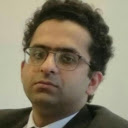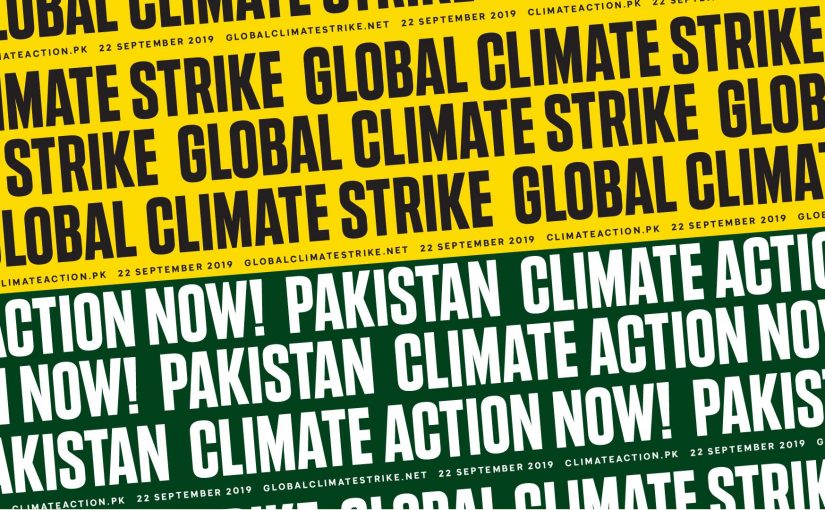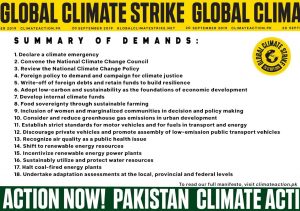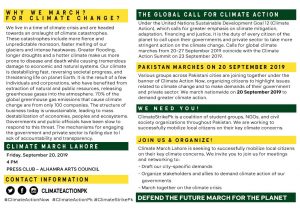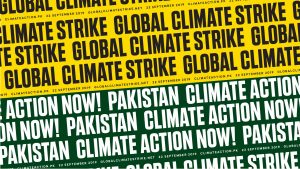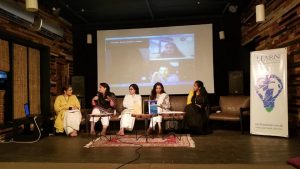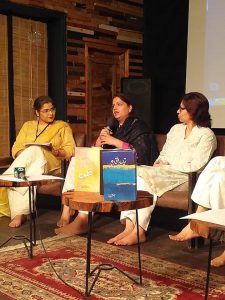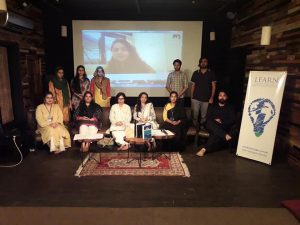Introduction
Pakistan Tehreek e Insaaf (PTI) in its manifesto, had identified the uniform system of schooling as one of its priority. It based its ambitious plan to eradicate the ‘educational apartheid’ of foreign and elite schools in Pakistan in the hopes to provide equal education to all under the ‘one nation, one curriculum’ vision of Prime Minister Imran Khan. The Single National curriculum (SNC) has been described as a means to that end. While we understand the need to provide access to quality education for all children, we also cannot help but see the fallacies of the arguments and grounds put forward by the government to impose one curriculum and the dangers it poses to not just the rights of children, their future but also to this nation and to Pakistan on the whole. The sooner these are understood and countered, the better it will be for the future of this country and its children.
SNC has as many implications as the grounds advanced for its imposition. We will address each of them in turn to highlight the fallacies and the challenges that each may pose.
Class Society and Education
The government places the blame for class inequality on the different schooling systems and the different curriculums prevalent in the country without truly understanding the class dynamics.
The assumption appears to be that if differing educational systems and curriculums are the source of unequal access to opportunities then perhaps standardization is the answer. In fact, that could not be any further from truth. This is not only an oversimplification of the challenge of ensuring quality education for all, but also flawed, both in theory and in practice at many levels. At best, it is akin to a treatment of the symptoms, as opposed to the actual disease i.e. economic inequality.
One of the key considerations of the new SNC is to move from rote learning to project based learning; but project based learning requires a learning eco-system and investment beyond the classroom as well as teacher training. However, the schools, even with the same curriculum, are not identically placed in terms of resources. How then would the class difference be eliminated merely by imposing a homogenized curriculum? The important thing to understand really is whether education the ‘cause’ or the ‘product’ of class inequality? Until this fundamental difference is understood, it is likely that all responses to eradicate the class inequality in Pakistan would remain symptomatic and consequently ineffective for a long-term and sustainable cure to the growing divide between the rich and the poor.
A class-based society originates when the means of production and wealth are unequally held and consequently, determine the distribution of power in the society. Those who control the means of production, also control the production and distribution of knowledge to perpetuate and reproduce ideas that ensure that the narrow and vested interests of the ruling groups, classes or castes are widely accepted as the interests of everyone. The fewer such actors are in a society, the more unequal it is. The lesser the diversity of thoughts and ideas, the more it is an indicator of the concentration of power in a few hands.
In other words, ideology follows the classes, not the other way around, as has been dangerously assumed under the single national curriculum. That means, that the inequalities in the society are not created because of the differing methods of schooling or curriculum, rather that the differing schooling and curriculums are created by the ruling elite as a means to perpetuate the inequalities or its dominant ideology. They are not the reason why the inequalities exist in the first place, rather they are the consequence of an unequal society based on an exploitative and unequal system of distribution of resources and power. To assume otherwise, would be to turn a blind eye to the glaring economic disparities and the systemic factors that place the means of production in the hands of the ruling few at the expense of the masses.
The sham of the uniformity argument is also evident from the fact that the new curriculum leaves co-curricular activities including, drama, sports, arts etc. out of its ambit and into the sphere of private schools who will each have different resources and so the stated equality will still not be achieved.
Therefore, the claim that one nation, one curriculum would equalise and get rid of education apartheid without first fixing the economic inequalities is false and misleading.
State Duty v Interference
The state has a duty to provide free and compulsory education. The duty entails that the state ensures that there is a public alternative to access quality education by developing good quality public schools at par with a stated benchmark. The duty of the state is not discharged by deflecting the blame on private schools or by the excessive, unfair and unnecessary regulation of private sector.
In order to fulfil this duty, the state has to ensure that a certain standard of quality education is provided in public schools and the necessary funding to ensure the minimum standards of infrastructure, equipment and teacher’s trainings is delivered so that the gap between state and private schools is reduced.
The private schools are neither responsible for the widening of the ‘quality’ gap between their institutions and the state schools nor it is their duty to provide free and compulsory education to all. In doing so, the state is penalizing the private institutions for their own failure to deliver quality education and schooling at par with globally recognised standards. A duty that they were supposed to have fulfilled, not by eliminating competition, but by offering comparable or equivalent standards.
Rights of Children
Children have several rights including the right to education, freedom of thought conscience and religion, the right to preservation of identity, the right to access information and material from a diversity of national and international sources, especially those aimed at the promotion of the social, spiritual, moral well-being and physical and mental health of the children, the right of minorities to enjoy their own culture, to profess and practise their own religion, or to use their own language.
SNC severely curtails these rights as it limits the textbooks that can be used by schools. Only 30 model textbooks are said to have been approved for use which have been prepared by the Federal Government; this affects right of students to learn from variety of resources and also impacts the democratic right of parents to choose the education they want for their children. Even though private publishers may work on developing textbooks in conformity with the SNC, but these may not be used until they have been approved by Punjab Curriculum Textbook Board, External Review Committees and Muttahida Ulema Board. No timelines for such approvals have been mentioned. On the contrary, this new 3 tier clearance and NOC process has been imposed on publishers of which only the fee of Rs 10,000 for PCTB has been prescribed while the charges for Ulema Board and External Committees are left to be negotiated by individual publishers per book per year per province. All this will result in much higher prices for the books. The use of additional books and supplementary material for education is a fundamental right and this right must be respected. Furthermore, in face of competition laws how can there be room for such monopoly by the Board?
Perhaps, the greatest impact on children would be in terms of the likelihood of their ability to compete internationally. Unfortunately, in Pakistan education has been used more as a political tool than as an endeavour to enhance the skills and abilities of the children to do well in their chosen fields professionally. The policies have been centred around the ideological narrative as opposed to pedagogical aims. This is worrying because we live in an increasingly inter-connected and inter-dependent world and face regional and global challenges that require collective actions.
The thresholds of modern industry and technologically advanced world requires advanced research and study; to be able to learn these and contribute meaningfully would require us to focus on developing analytical and critical thinking skills in the students which the existing curriculum fails to achieve. Despite tall claims of moving towards project based learning, the hangover of rote learning and memorisation shine through the curriculum and because there is lack of focus and investment on teacher training, it is unlikely that any pedagogical aims would be prioritised through SNC even though the purpose of education should be to achieve pedagogical aims as opposed to ideological or political goals. It is the question of the future of the children of this country which should never be up for politics.
Curiously, India experimented with National Curriculum Framework in 2000 on similar slogans and theological and ideological imperatives which eventually led to increased Hindutvaism; we should learn from their example, understand that in countries with rich, multiple and diverse histories, cultures and communities, imposing a singular majoritarian vision is not the most pragmatic or inclusive way to take the nation forward. Rather, hearts and minds will have to opened to embrace all the parts that make the whole and their respective freedom to develop their curriculum with their own sensibilities, language, history and objectives will have to be accepted in letter and in spirit for the federation to be successful. Excessive control at the expense of suppression of diverse but constitutionally equal voices has the danger to lead to resentments that may fuel uprisings and conflict.
Uniform v Inclusive
Homogenizing knowledge can dilute diverse, constitutionally equal but less dominant voices necessary for critical reflection and development of ideas. ‘Sameness’ does not automatically translate into ‘high quality’. Homogeneity of education often comes at the expense of ignoring the diversity and the multiplicity of a state’s culture, politics, class, religious, regional and gender interests and are designed to ensure the long-term continuity and relative permanence of the dominant political ideology. The value system of the majority become the source of value for everyone, leading eventually to potential conflicts, particularly in countries with a diverse historic, cultural and ethnic base. The curriculum also fails to appreciate the rich diversity of language and culture in Pakistan and ends up creating the dichotomy between the ‘self’ and the ‘other’ at yet another level. The erasure of ‘others’ and their unique identity becomes a form of psychic violence and an atrocity committed against them. The single national curriculum is centred on the notion of ‘one nation, one curriculum’, which to begin with is in itself an exclusionary and silencing slogan that denies the diversity of identities prevalent in Pakistan and children too all have different learning needs.
Minority Rights
SNC violates rights of minorities under Art. 22 and 28 of the Constitution of Pakistan via several common subjects that all students are expected to study.
Rights of Parents
Under Article 26 of Universal Declaration of Human Rights, which is a very widely accepted declaration and hence evidence of customary international law recognises that parents have the first and fundamental right to choose the education for their children, SNC takes away that choice by homogenizing all schools.
18th Amendment
Finally, education is a provincial subject but SNC appears to be a de facto attempt to recentralise the subject. Never has it been debated in assembly despite MPA Bushra Butt filing a resolution for it in the Punjab Assembly, nor have the wider stakeholders including, parents, children, publishers been taken on board. This sets a dangerous precedent for provincial autonomy so we also need to think beyond curriculum and gauge the impact of SNC on the shrinking policy domain of provinces as well as on the newfound de facto basis or, to borrow the words of Justice Jawad Hassan, ‘consultative federalism’ to subvert constitutional provisions.
This raises several questions, can, for instance, Provincial and Federal Governments override the Constitution by simply desiring or being in agreement? Can fundamental freedoms argument be used to subvert the Constitution itself such as to erode the impact of 18th amendment or should they be interpreted in a manner so as not cause any inconsistency or conflict between fundamental rights of citizens and constitutional rights of provinces? In other words, do fundamental rights of people prevail over constitutional rights of provinces, which in turn, are also the rights of the people of those provinces?
Conclusion
SNC raises many pertinent questions of fundamental and constitutional rights as well as of rights of children, parents, minorities, provinces, inclusivity, state regulation, policy domain future prospects and of goals of education which will have far reaching implications beyond the curriculum. It should for this reason be revisited and be made less prescriptive to make room for the diversity and diverse learning needs of people in Pakistan that meets international standards.
Lahore Education and Research Network is a capacity building and research initiative based in Lahore. Its focus areas include, education, human rights, climate change and law.




